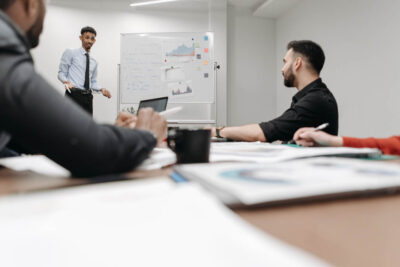People and Workplace Culture Resource Center
At every institution, the most important asset for fulfilling their highest-order strategic ambitions—whether those be delivering on a high-quality student experience or driving local and regional economic development—is people. But high levels of staff turnover, increased competition with out-of-sector organizations, and widespread faculty and staff disengagement pose a growing threat to higher ed’s ability to achieve these and other critically important aims.
To improve their market competitiveness and ultimately become employers of choice, colleges and universities must treat talent as a strategic asset and make new investments to help attract, retain, and engage talented faculty and staff.
Our research on people and workplace culture is organized around two critical priorities: the modern talent function and the faculty and staff experience. Click the subcategories below to jump to resources within that section.
-
Faculty and Staff Experience
Recommended Reading
-
Higher Ed’s Talent Imperative
Learn five critical dimensions of change that have reshaped the competitive landscape for talent and require institutions to manage their talent as a strategic asset.
-
Market-Credible Staff Compensation Playbook
Explore four imperatives to bolster your institution’s competitiveness on pay and make the most of limited salary dollars.
-
Succession Planning Toolkit
Download EAB’s Succession Planning Toolkit to unlock seven essential tools designed to address the most common challenges in traditional succession planning.
Develop Your Employee Value Proposition
For an introduction to staff compensation strategy geared toward campus leaders without HR backgrounds, check out our research report.

Market-Credible Staff Compensation Playbook

4 Misconceptions About Employee Value Propositions that Every Campus Leader Needs to Confront
Create Flexible Work Arrangements and Spaces

Remote Work and Hybrid Workplace Resource Center
Strengthen Candidate Experience and Recruitment
Get started by requesting a Job Description Audit or an Employment Website Audit for tailored improvement recommendations from EAB experts.

Recruitment Strategies to Win Over Top External Talent

Faculty Search Committee Launch Kit
Reimagine HR Organization and Management
To start, check out our blog on three competencies that chief human resource officers need to possess to lead a strategic HR function.

Applying People Analytics to Business Problems

The High-Efficiency HR Department

Performance Management Resource Center
Boost Engagement and Well-being

105 tactics to improve employee engagement

Toolkit for Building an Anti-Burnout Workplace Culture in Academic Affairs

Align Workloads and Schedules with Student Demand
Foster an Inclusive Workplace Climate
For more on building an inclusive campus climate and championing equity, explore the DEIJ Resource Center.

Create a Higher Ed Workplace Culture Where Faculty and Staff Want to Stay

3 reasons why faculty and staff leave their jobs due to climate

Climate Feedback Gathering and Action Planning Toolkit for Higher Ed
Encourage Career and Leadership Development
If you're looking for professional development opportunities, don't miss EAB's Rising Higher Education Leaders Fellowship.

Build a Research-Focused Faculty Development Program

Succession Planning Toolkit
This resource requires EAB partnership access to view.
Access the resource center
Learn how you can get access to this resource as well as hands-on support from our experts through Strategic Advisory Services.
Learn More